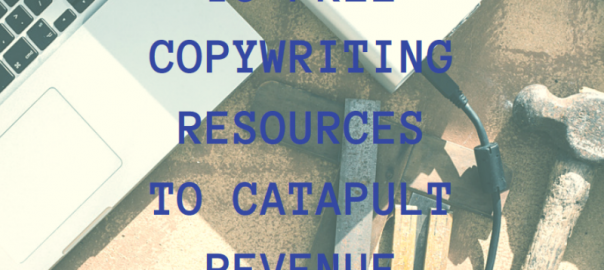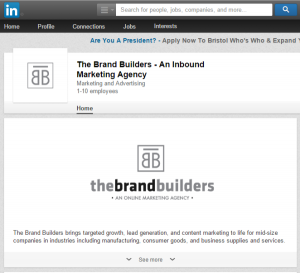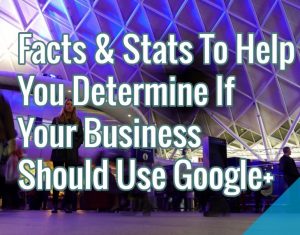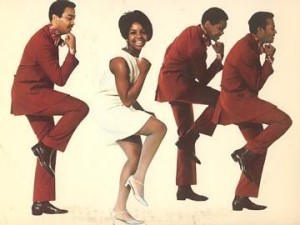You start with a few formulas, and then you tweak – insert a power word here, take advantage of expanded headlines there. Whatever it’s gonna take to hit chart-topping CTRs.
Results all come down to your ad text at that point. That simple string of characters acts as a catalyst, leaping off the page and into a viewer’s brain to motivate, inspire, scare, or forcibly push them through the formidable couch-bound inertia that keeps people from making any changes at all.

But no one teaches this. There’s no Ad Copywriting 101 in college.
Instead, there are an abundance of free resources online that will teach you everything needed to know to instantly improve your AdWords copy. No formal education or expensive tuition required.
Here are 10 of the best free copywriting resources that you can read right now.
1. Gary Halbert: The Boron Letters
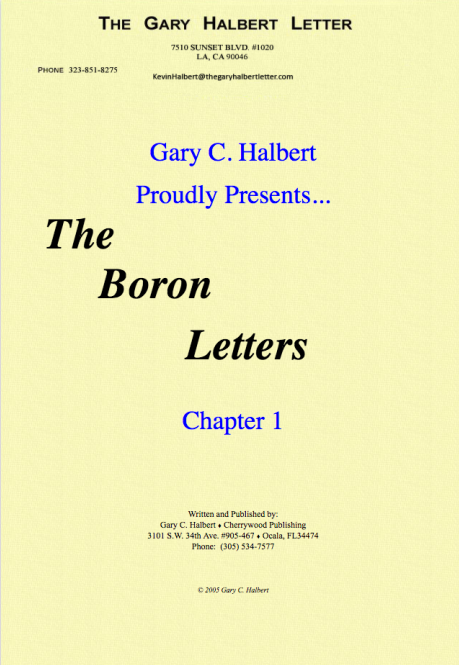
The first resource is also the weirdest.
Gary Halbert was like the OG internet infomarketer in his day. And he’s got a rap sheet to prove it.
His ads were excellent. The products in his ads? Not so much.
One thing leads to another (as they usually do) and he winds up in jail. Apparently, though, prison is an excellent productivity hack (no free Wi-Fi).
While there, Gary decided to make the most of his incarceration by writing to his son. You know, passing down his fatherly wisdom and all that.
And thus, The Boron Letters came to be.
It’s not always PC. But it is entertaining. Vastly interesting lessons that range from life to business to copywriting.
See, here’s the trick with this copywriting thing. Don’t watch what people say. Watch what they do: The storytelling. The sentence structure (or lack thereof). The conversational tone.
It’s all there inside The Boron Letters. You’ll get distracted while reading it. You’ll question what the hell you’re wasting your time doing. But then you’ll get to the good stuff. And it’ll all be worth it.
The Boron Letters also appear alongside Gary’s other, similarly personal letters on direct-response copywriting. Here’s one example. They were originally packaged as part of a high-dollar subscription thing (you know, those infomarketing guru’s gotta hype something).
But now it’s available for free for all to read. (Gotta love internet piracy.)
2. CopyHackers: The Ultimate Guide to No-Pain Copywriting
Many of these resources are going to look like blog posts. (We are shooting for free here, aren’t we?) But in reality they’re so much more.
The Ultimate Guide to No-Pain Copywriting by the always excellent CopyHackers is a perfect example.
Sure. It’s technically a blog post. But it also clocks in at a 59-minute reading time! So it’s one you’ll want to bookmark, favorite, Someday/Maybe, and come back to reference in the future.
Once again, you can also learn by watching (and not just reading).
Look at that first line:
“Because only rookies write from scratch…”
It’s short and bold. But it also introduces the hook from the get-go. “Rookies”. “Write from Scratch”. Formulas. The entire introduction is a lesson unto itself.
The hook is: zen. The promise of a simpler, easier life.
And then the meat goes through almost every single formula, including old-school class ones, for almost every circumstance imaginable.
Take testimonials for instance.
People are installing ad blockers faster than you can blink. Instead, they choose to rely on recommendations from other individuals (9 out of 10 people trust them more than brand-sponsored messages).

Ideally, testimonials should help potential buyers overcome a specific hurdle.
Think about it. They’re the living, breathing version of your buyer persona. People want to learn how those people ran up against challenges just like they face on a daily basis. And they want to know how they were able to overcome those challenges to reassure the money’s a good investment, the time it takes is minimal, or the stress endured is worthwhile.
About halfway down you’ll find the TEASE testimonial formula, with an example from some handsome young man from 2013.

And, of course, there’s also more ad-specific formulas so you can see how a formula like PAS can serve as a framework for your AdWords or Facebook ad copy.
3. KlientBoost: The Landing Page Copywriting Blueprint
Ad copy is only as good as its landing page at the end of the day. Which means even if you come up with a great 10-word hook, you gotta stretch that out a bit for the page itself.
The Landing Page Copywriting Blueprint from KlientBoost can help. There’s a gifographic for starters (yay, no reading!). But more importantly it unveils the subtle nuances of copywriting for online ad campaigns.
For example, what has the largest bearing on your campaign conversions?
Simple: The offer.
The reason is because different offers (with different hooks for different levels of commitment) will appeal to different groups of people.
That’s why pushing your salesy Facebook campaign to ice cold traffic fails miserably. You gotta warm those peeps up first with infographics, interest them with eBooks, and build trust with case studies before going in for the kill.

These considerations also dictate other things. For example, long or short landing page?
Shorter is better for interested parties who just want the facts, while longer is preferable for brand new visitors.
Point is: You can’t copy-and-paste a copywriting formula and use it at random (no matter how good or timeless it might be). You have to exercise some judgment, consider the circumstances and context. Then you write.
4. Jon Morrow: His Posts. All of them.

Confession time. Sometimes I cry.
It’s not pretty. A grown, balding man crying. Cringe-worthy. Embarrassing even.
But you can’t blame me. I dare you to read this or this and not tear up a little bit. Go on. Try it.
Half a decade ago, when I was a slave to the man in-house marketer, I would re-write those two posts to internalize the writing. (Because I had a lot of free time. See: Being an employee.)
Hey. If it was good enough for Ben Franklin, it’s good enough for us.
There’s a lot that goes into this copywriting thing.
There’s storytelling arcs from classic movies (we’ll get to that in a bit). Like the “Reluctant Hero” which pops up across Hollywood every quarter or so. There’s the stylistic elements like sentence fragments or line repetition. The twist turns, “open loops,” and unexpected details that force readers to keep, well, reading.
Oh. And did I mention Jon writes with his voice?
Virtuoso. Seriously. Read them.
5. ConversionXL: Quick Course on Effective Website Copywriting
180 degrees in the opposite direction we have ConversionXL’s dry, technical, in-depth Quick Course on Effective Website Copywriting (I mean that as a compliment).
Their point of view, unsurprisingly given the name, is a focus on copy that converts. That gets people to take action and give you their info or whip out a credit card.

Most of these other resources listed provide tips, tricks, and formulas. All good and helpful. But ConversionXL takes it one step further, presenting a framework or process for actually sitting down (or standing up – sitting is the new smoking apparently) and writing copy.
It kicks off by walking you through how to perform basic research on the customer, product, and competition. This prep work, truthfully, is where the gold lies.
It’s like that old repairman story. Takes them about five minutes to perform a task and bill a couple hundred bucks. The customer is appalled at the total. So the plumber writes out an itemized version, explaining:
- $ 0.25 cents for wear and tear on the hammer,
- And $ 75.00 for knowing where to hit the pipe.
See. The writing stuff is hard. No doubt. But you have absolutely no idea what to write in the first place without the research. (Even old Ogilvy knew this!)
Doesn’t matter if we’re talking about writing a long-form landing page, writing a blog post like this, or a measly five words in a headline. You gotta do the work before you do the work.
6. Khan Academy: Pixar in a Box
Pixar has won 210 awards and been nominated 211 times.
Not bad, considering they’ve only released 17 feature films.
That’s, like…a bunch of awards for each film (math was never my strong suit).
Sure, their graphics are good. Bleeding edge and all that. But they don’t win all those awards and break box office revenue and WOW moviegoers with graphics alone.
The secret lies in the heart.
Pixar is, above all else, master storytelling. They know how to draw you in with unforgettable yet relatable characters. How to toy with your emotions so you buy into their world.

And thankfully, the Khan Academy is bringing the story behind their stories to life.
Look: We all talk about storytelling. Seth told us years ago. And yet, no one’s tellin’ any stories.
Go read your own blog posts. Go read your landing pages. Go read your advertisements.
The same old boring, “me-too” exposition that solves zero problems and motivates zero people to read, click, or opt-in.
If someone told you about the important reasons for internet security, you would agree. And then continue to ignore them. But if they started out by first talking about how hackers have stolen over one billion dollars from businesses last year alone and another billion people had their identities stolen, your ears might perk up a little bit.
Great ads need hooks. Drama. Foreshadowing. Conflict. Climaxes and even a dénouement to put everything straight after you purchase.
In other words, the same storytelling fundamentals originally put forth by the Greeks and Romans.
7. Jon Morrow Redux: Headline Hacks
Speaking of hooks, let’s jump back to Jon Morrow. Because his Headline Hacks will give you a handful to get started with (in addition to helpful explanations of why each works).
Here’s what you should do after downloading it.
- Open up a notebook or Google docs.
- Begin copying down – word for word – each section, one at a time. (Remember that whole Ben Franklin bit? There’s also some science about learning stuff better when you rewrite it. For what it’s worth.)
- Now repeat that for the next section, making sure to add a helpful note for how each should be used.
- So at the end, you should have created a little mini-database that looks something like:

Click image to enlarge
And voila! Literally start by just copying and pasting these. Then reworking. Then adding to it as you get better.
No more limp headlines that sabotage your ad campaign CTR’s or landing page conversions.
8. Claude Hopkins: Scientific Advertising
In 1923, ad man Claude Hopkins published Scientific Advertising, which went on to inspire the likes of David Ogilvy and Gary Halbert (ever heard of ‘em?).

Ogilvy once remarked:
“Nobody should be allowed to have anything to do with advertising until he has read this book seven times. It changed the course of my life.”
In this book that was written before the Great Depression, Hopkins explains his testing philosophy to (a) maximize results while (b) minimizing the damage a bad ad can inflict.
He also introduces new age concepts that we digital marketers like to take credit for, like split testing ad campaigns and using coupons to track ad performance, customer purchases, and power loyalty or database marketing campaigns.
It’s a little dry. Some tactical elements might be outdated. But the principles are the definition of timeless.
You can purchase it on Amazon. OR you can read it online for free and download the PDF version if you’d like.
9. Steven Pressfield: Writing Wednesdays
The excellent Made to Stick (not free) introduces the idea of “successful plots” that firmly implant themselves into people’s brains.
Think of the Challenge Plot (similar to the Reluctant Hero), where Rocky Balboa goes from dock worker to world champ.
Or the Connection Plot that brings people together from different sides of the tracks, like Claire Danes and Leonardo DiCaprio (he’s so dreamy) in Romeo and Juliet (was there a book version, too?).

Point is, many of our favorite works from the past few centuries are well worn ideas that still resonate (yet presented in new, refreshing ways).
Steven Pressfield, author of The Legend of Bagger Vance and The War of Art (among many others), dissects many of these plot styles and other writing insights in his Writing Wednesdays column.
His work also reinforces another recurring theme here: watch what he does, not just what he says.
The writing is crisp and clear. Conversational. And he uses modern day examples as a frame of reference to help make intangible concepts concrete for readers.
10. Rachel Aaron: How I Went from Writing 2000 Words a Day to 10,000 Words a Day

Rachel Aaron writes sciences fiction. Or maybe romance? I’m not entirely sure of the difference.
And her post, How I Went from Writing 2000 Words a Day to 10,000 Words a Day was the kernel for an expanded Amazon version, entitled 2K to 10K.
Here’s the deal.
You know writing’s tough. The idea of writing 2,000 words in a single sitting probably sounds like torture to most.
Instead, Rachel retells her experience in upping that word count to over 10,000 in a single day.
Why is this important? And what on Earth does this have to do with ad campaigns?
Writing is everything.
The top-of-funnel content to bring in new search visitors. The eBook for your Facebook lead gen campaign. The long-form landing page that gets them to convert. The 10-part drip email campaign that nurtures and upsells.
You wanna cut it in today’s marketing world? You’re going to have to do some writing.
Penning that five-word headline and eight-word description for your ad campaign isn’t the end of work for the day. It’s just the beginning.
BONUS: WordStream’s Free White Paper Library

WordStream’s free learning resource PPC University offers a bunch of free guides to help you write better copy for your ads and landing pages.
Start Reading!
The legendary Ogilvy on Advertising talks about David’s response to someone who works in advertising, yet had not read any books about advertising.
Specifically, he asked:
“Suppose your gallbladder has to be removed this evening. Will you choose a surgeon who has read some books on anatomy and knows where the gallbladder, is or someone who relies on his own intuition?”
Same applies today.
Maybe you didn’t learn ad copywriting in college, but if you look around, there’s an endless amount of free (or extremely inexpensive) resources available that will teach you the ropes.
Grasp the fundamentals, and there’s no reason you’ll have to suffer subpar CTR or conversions anymore.
Digital & Social Articles on Business 2 Community(93)
Report Post